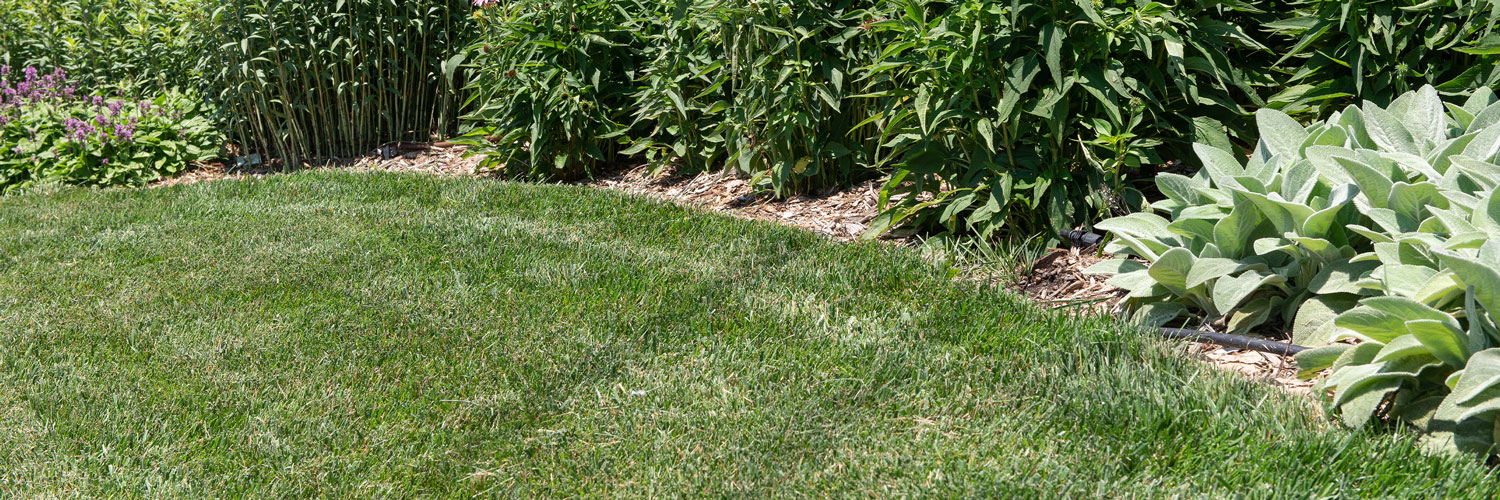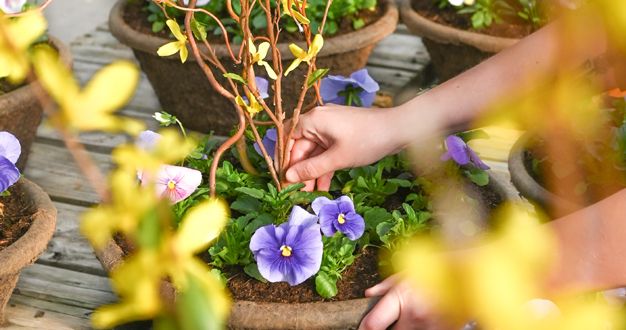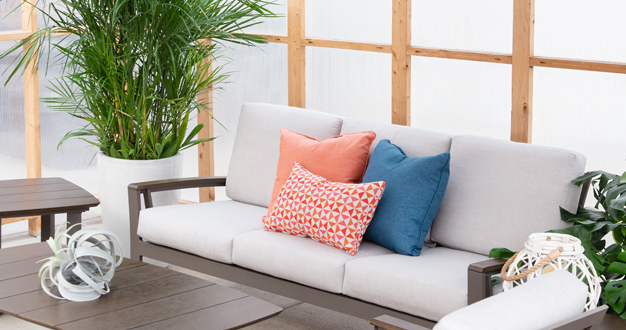
Is it possible to take a low-impact, environmentally friendly approach to lawn care and still have that green, healthy lawn you love? It is. By focusing on building healthy soil, using earth-friendly products, and adjusting a few cultural practices, we can have the soft, green grass we want even while using fewer synthetic chemicals, less water, and spending less mowing time too.
Start With a Healthy Soil
It’s easy to forget that our lawn is really a collection of countless grass plants. Like all plants, turfgrasses are happiest when the soil they live in is healthy too – and happy plants are more resistant to diseases, pests, and climate stress. Healthy soil is alive with a teeming community of bacteria, fungi, insects, and worms that work together to create a balanced support system for plants. The products and cultural practices we use on our lawn can have a direct impact on the health and function of this important soil community.
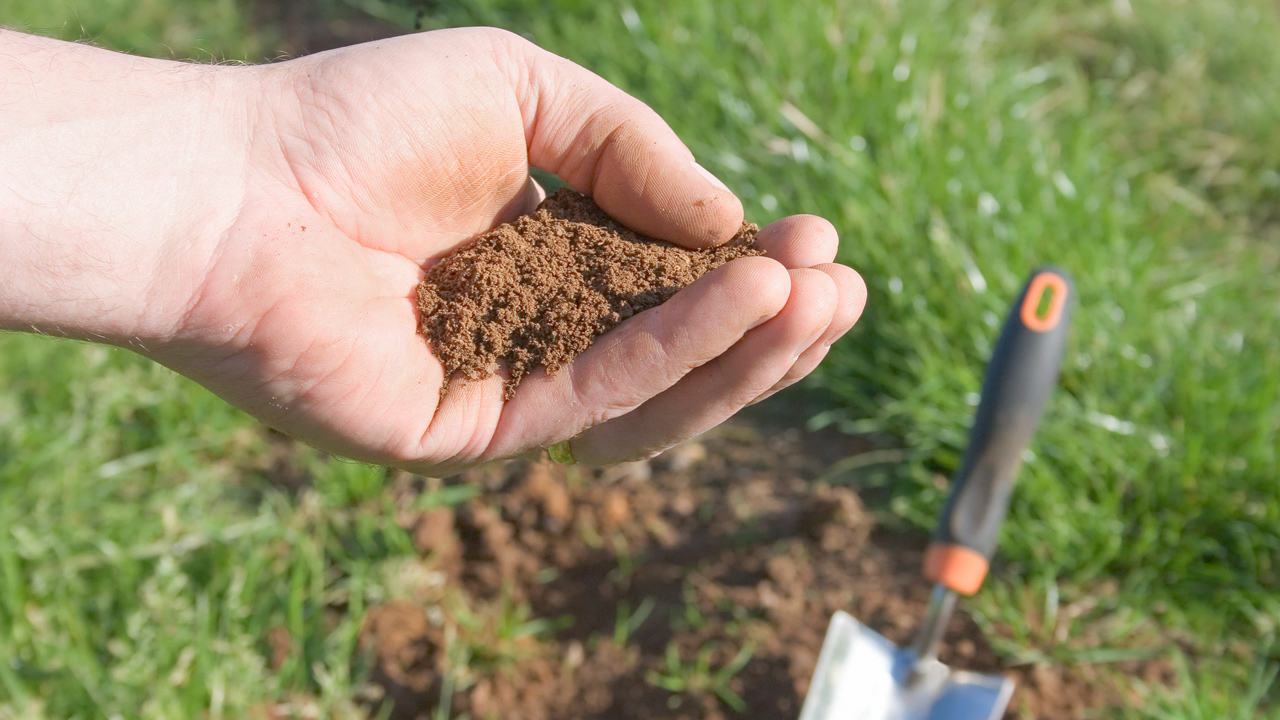
Use Organic or Natural Fertilizers
Organic fertilizers such as compost, vegetable and animal meals, and worm castings “feed” the soil community. Soil microbes in turn break down the organic matter into its component nutrients – like nitrogen, magnesium, phosphorus, and potassium – in forms that plants can actually absorb. The microbes’ activity also improves the structure of the soil, allowing better drainage and air exchange with the roots.
In contrast, synthetic fertilizers add no organic material to the soil, and over time the vital microbe community declines – you may even notice your lawn becoming dependent on more synthetic fertilizers to stay green and healthy.
Leave the Clippings
Another step in an earth-friendly approach to lawn care is to simply remove the bag from your mower. Grass clippings return valuable organic material to the soil where the microbes break them down into nutrients that they and the lawn can use again.

Reduce Your Inputs
Test Your Soil before Fertilizing
Whether you use organic or synthetic fertilizers, it’s a good idea to test the pH level of your soil and the amount of nutrients it already contains before applying products that it may or may not need. Here at our store, we have soil test kits you can use to test the soil yourself. Or in Omaha, Midwest Laboratories offers more comprehensive soil testing too. If you’re not sure what to make of the results, their team can help, or you can always ask a member of our Plant Care team as well.
Use the Right Amount of Product
Make sure you know how much lawn you have – usually measured in square feet – so you can apply the right amount of fertilizer and other products following the directions on the label. Too much can stress the lawn or just run off and pollute our natural waterways. Too little may not meet the needs of your turfgrass and can leave it vulnerable to weeds and other issues. Once you know the area of your lawn, you’ll know exactly how much product to buy and how to calibrate your spreader to distribute it properly.
Add More Water Less Often
A typical lawn needs about 1 to 1 ½ inches of water each week – either from rainfall, irrigation, or a combination of the two. You could apply that weekly amount in short, shallow doses over the course of several days, but it’s better for your lawn to receive its water in larger amounts and less frequently. Deep watering encourages a deeper root system – an insurance policy against hot, dry summers.
A lawn that gets wet frequently is also more prone to bacterial and fungal diseases, so letting your lawn remain dry for longer periods of time keeps it healthier that way too.

Practice Lawn-Friendly Mowing
According to University of Missouri Extension, mowing is “the most important, intensive cultural practice that lawns are subjected to over the growing season.” Mowing improperly puts stress on your turfgrass and makes it more susceptible to pests, diseases, and weeds – which can lead to the need for additional pesticides, herbicides, and other inputs. Taller grass helps moderate soil temperature, reduces moisture evaporation, and shades out weeds too. For cool-season lawns made of tall fescue and Kentucky bluegrass, an ideal height is three inches.
To further reduce mowing stress on your lawn, keep the mower blade sharp – a sharp blade creates clean cuts that are harder for infectious diseases to enter. And mow often enough that you only remove about one-third the height of your turfgrass at a time.
Try Low-Maintenance Grasses
If turfgrass is living under conditions it doesn’t like, it’ll be stressed. A stressed plant is more likely to become diseased, succumb to an insect, or get out-competed by weeds – and once again, you’ll find yourself reaching for more fertilizers and weed killers to compensate. In our area, tall fescue blends with a low proportion of bluegrass are a good choice. Buffalo grass is another option – it requires less mowing and less additional water than many other turfgrasses. If you have questions about which grass seed is best for your lawn – whether it’s shady or sunny – stop by the Plant Care desk in the Greenhouse.
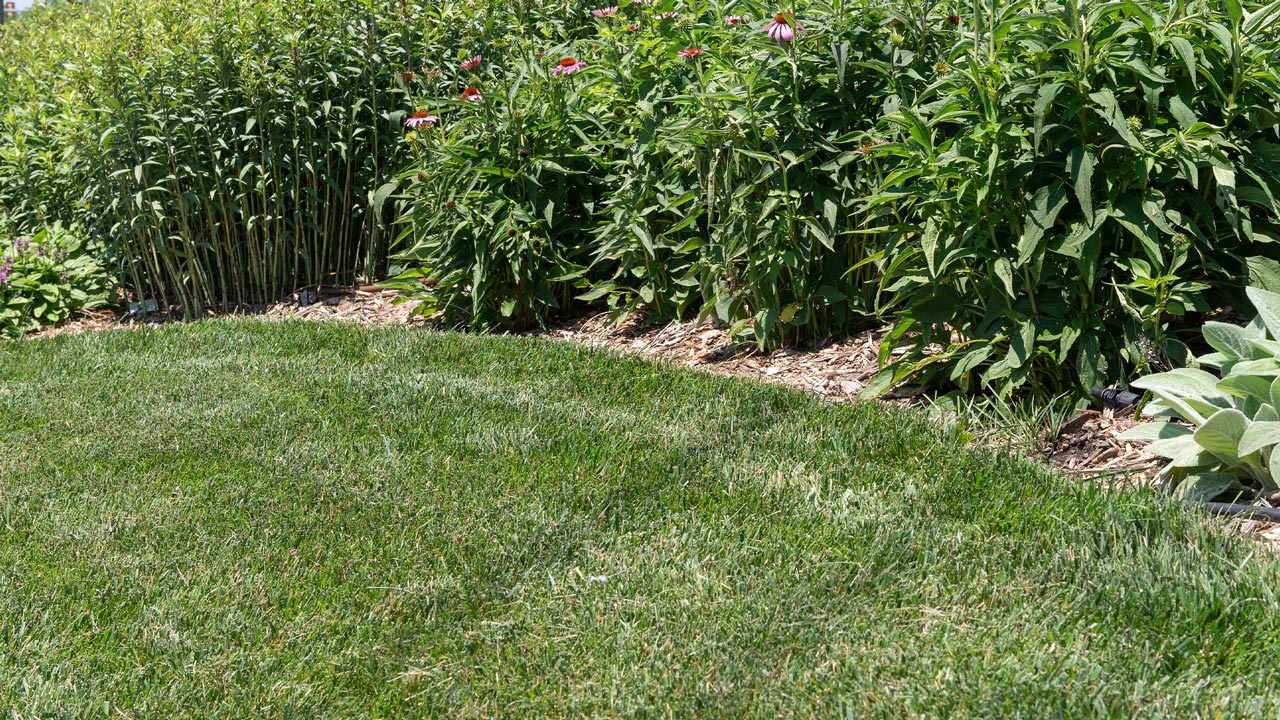
Consider Having Less Lawn
Seems strange to say that an earth-friendly approach to lawn care may involve having less lawn in the first place, but it’s true. A grass lawn is the most expensive plant you have on your property – in terms of the maintenance, supplies, and water it requires to stay attractive. It makes sense to consider whether your time and money might be better spent converting some of your lawn into landscape beds filled with low-maintenance perennials, trees, and shrubs. Turfgrass alternatives could include:
A clover lawn
A rain garden or rock garden
Keep it Easy-Care + Earth-Friendly
As it turns out, adopting an earth-friendly approach can make your lawn maintenance routine easier and less expensive while at the same time reducing the amount of excess water and synthetic chemicals we introduce into our outdoor spaces and the community landscape. It’s a win for everyone. To learn more about earth-friendly lawn care, just give us a call or stop by the store and talk with our team. We’re glad to answer your questions and point out the best plants and products to get you started.

